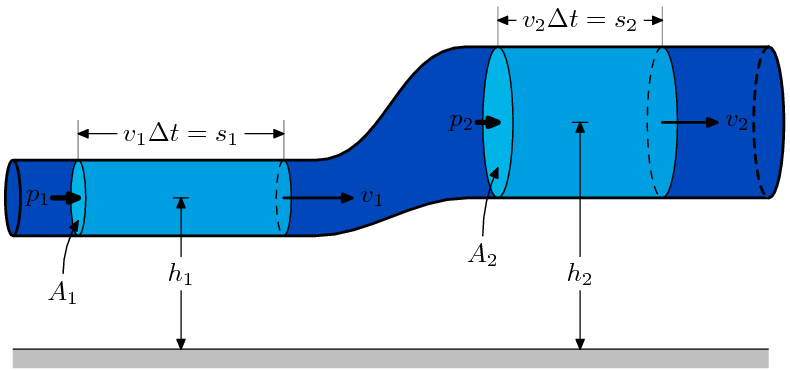Fluid dynamics
Fluid dynamics is the sub-discipline of fluid mechanics dealing with fluids (liquids and gases) in motion. It has several subdisciplines itself, including aerodynamics (the study of gases in motion) and hydrodynamics (the study of liquids in motion). Fluid dynamics has a wide range of applications, including calculating forces and moments on aircraft, determining the mass flow rate of petroleum through pipelines, predicting weather patterns, and reportedly modeling fission weapon detonation. Some of its principles are even used in traffic engineering, where traffic is treated as a continuous fluid. Fluid dynamics offers a mathematical structure that underlies these practical disciplines and that embraces empirical and semi-empirical laws, derived from flow measurement, used to solve practical problems. The solution to a fluid dynamics problem typically involves the calculation of various properties of the fluid, such as velocity, pressure, density, and temperature, as functions of space and time.
Introduction
editPhysical objects are made out of atoms, and in most circumstances are in one of three states; solid, liquid, or gas. Liquids and gases are considered fluids as they are able to be sheared and have no defined volume. This contrasts with solids which are rigid and can only shear for deformation. Fluid atoms or molecules are able to freely or semi-freely float in some mediums allowing them to disperse.
Variables
editPressure
edit- Pressure is defined as the Force per unit Area, this article will use SI units with units of Force in Newtons (kg*m/s^2) and Area (m^2) as pressure is in N/m^2 equal to 1 Pascal. Pressure can be viewed on how much fluids are pressed to move in a direction, when pressure is applied to a fluid it experiences displacement and in this artcle pressure will be defined with a "p".
- Density is defined as the Mass per unit Volume, or in SI kg/m^3. Unlike all other units in this article is dependent on tempature. All materials have density and generally for most materials as tempature increases density decreases. Density is dependent on the material used and each material at some tempature will have a defined density. In this article density is defined with a "D".
Archimedes' principle
editBuoyancy is the force of an object submerged in a fluid,
- Objects with a lower density than the density of the fluid they are submerged will float.
- Objects with a higher density than the density of the fluid they are submerged will sink.
Objects submerged displace the same volume of fluid as the fraction of the object submerged, for example a iron cube with a volume 1m^3 dropped into a container of water, the container of water will rise by a volume equal to 1m^3.
However objects can remain partly submerged, this can be mathamatically described as
Fraction submerged = Volume of object submerged/ Total volume of object = Volume of fluid displaced/Total volume of object.
This could be rearranged by mass/density=volume, we can replace this into the equation like
Fraction submerged = (Mass of object submerged/density of object)/(Mass of fluid/ density of object)
= (Mass of fluid displaced/density of fluid)/(Mass of fluid/ density of fluid).
